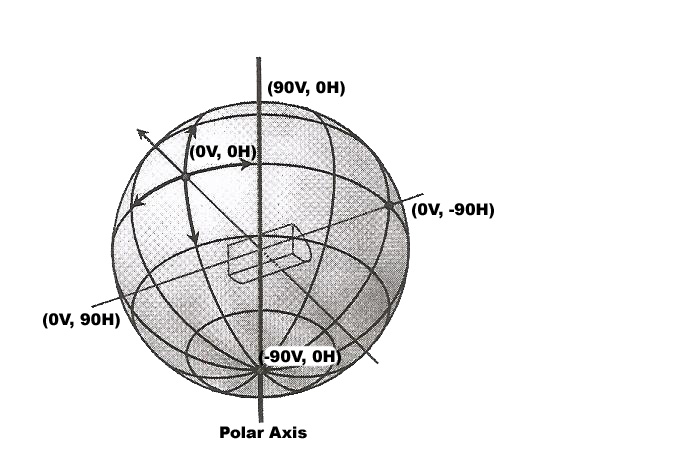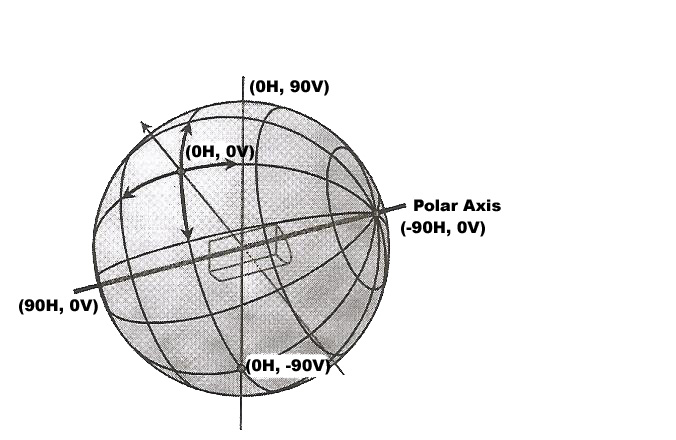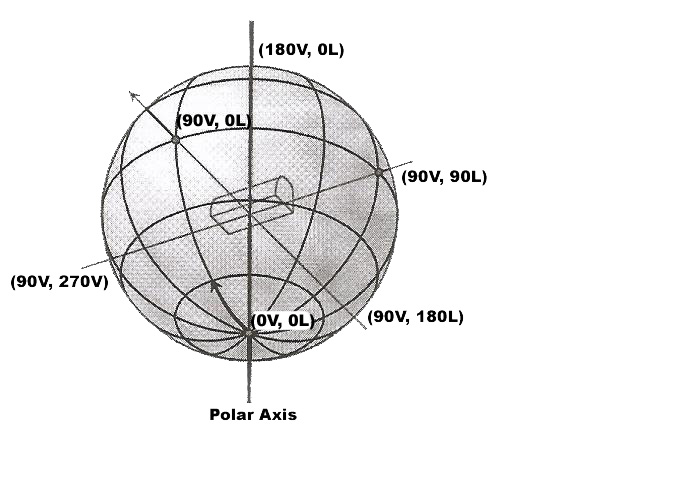This article discusses the three photometric data categories: Type A, Type B and Type C. These types describe the photometric web surrounding the light source and were designed to match the type of source being measured or tested. At present, only Type B and Type C photometry are supported in all LAI software products.
Type A
Used primarily for automotive lighting and optical systems (e.g. headlights).
Coordinate System:
Polar axis is vertical. Point (0,0) is located on the equator of the sphere. The luminaire is generally aimed at (0,0). Vertical angles range from -90 degrees (nadir) to 90 degrees (zenith). Horizontal angles range in value from -90 degrees to 90 degrees. The actual angle set used in a Type A photometric report depends on the luminaire distribution and symmetry.
Type B
Used primarily for floodlights.
Coordinate System:
The Type B coordinate system looks like a Type A coordinate system that has been turned on its side (polar axis is horizontal instead of vertical). Point (0,0) is located on the equator of the sphere. The luminaire is generally aimed at (0,0). Vertical angles range from -90 degrees (nadir) to 90 degrees (zenith). Horizontal angles range in value from -90 degrees to 90 degrees. The actual angle set used in a Type B photometric report depends on the luminaire distribution and symmetry.
Type C
Most popular and widely recognized format. The majority of photometry is presented in Type C format.
Coordinate System:
The Type C coordinate system varies little from the Type A system. Polar axis is vertical. The luminaire is generally aimed at nadir (0V, 0L) or zenith (180V, 0L). Vertical angles range from 0 degrees (nadir) to 180 degrees (zenith). Lateral angles range in value from 0 degrees to 360 degrees. The actual angle set used in a Type C photometric test report varies depending on the luminaire distribution and symmetry. For example: A symmetrical downlight may only include one lateral angle (0), and vertical angles from 0 to 90 degrees.



